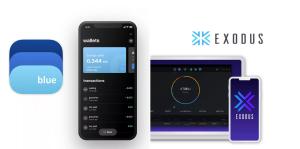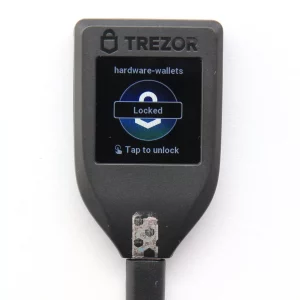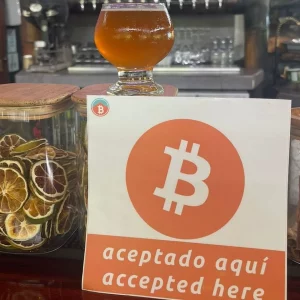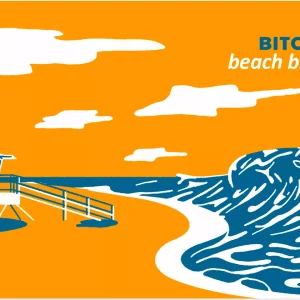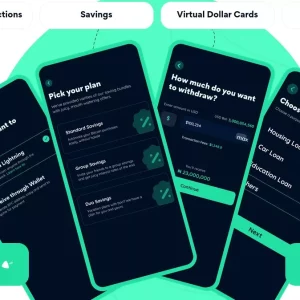Bitcoin’s popularity has led to a challenge: slow transaction times and high fees. Two innovative solutions have emerged: Liquid Network and Lightning Network. Let’s break down their differences.
What is Liquid Network?
The Liquid Network, launched by Blockstream in 2018, serves as a sidechain for Bitcoin. It provides fast, secure, and confidential transactions for digital assets. Unlike the main Bitcoin blockchain, Liquid operates as a separate network with its own consensus mechanism.
Liquid Bitcoin is a special type of digital asset that exists on a separate blockchain called the Liquid Network. Bitcoin on the Liquid Network is referred to as L-BTC or Liquid Bitcoin. L-BTC is verifiably backed by real Bitcoin held on the main Bitcoin blockchain. There’s a 1:1 peg, meaning for every L-BTC in circulation, there’s 1 BTC locked away on the main chain.
Read more: Liquid Bitcoin Explained
How does the Liquid Network work?
Liquid Network employs a federated consensus model, involving a group of trusted functionaries who validate transactions and secure the network. This mechanism allows for scalable and faster transaction settlement compared to the main Bitcoin network. Moreover, Liquid transactions can benefit from confidential transactions and asset issuance features.
As pointed out above, you can peg-in your Bitcoin to the Liquid sidechain, receiving an equivalent amount of Liquid Bitcoin (L-BTC). L-BTC can be pegged back out to regular Bitcoin on the main chain whenever needed.
To get Liquid Bitcoin, you’ll need a Liquid-enabled exchange or wallet to acquire L-BTC. These services handle the conversion between BTC and L-BTC.
What is the price of Liquid Bitcoin?: Liquid Bitcoin (L-BTC) is pegged to the value of Bitcoin (BTC) on a 1:1 basis. The price of L-BTC typically mirrors that of BTC. It’s essentially a placeholder on the Liquid sidechain. It fluctuates with the price of Bitcoin itself.
Advantages of Liquid Bitcoin
Liquid Network offers the following benefits:
- Faster transaction settlement compared to the main Bitcoin network, ideal for high-volume transfers.
- Enhanced privacy features such as confidential transactions.
- Facilitates the issuance of digital assets like stablecoins.
- Lower fees compared to on-chain Bitcoin transactions.
Disadvantages of Liquid Bitcoin
However, there are disadvantages you should know about. They include the following:
- Relies on a federated consensus model, which may introduce centralization concerns.
- Requires trust in the functionaries responsible for validating transactions.
- Primarily used by exchanges and institutions, not widely accessible yet.
Who Uses Liquid?: Exchanges, institutions, and high-volume traders benefit from Liquid’s speed and efficiency.
What is Lightning Network?
The Lightning Network is a layer-2 scaling solution designed to enable faster and cheaper Bitcoin transactions. It operates by creating off-chain payment channels between users, facilitating instant micropayments.
How does the Lightning Network work?
Lightning Network leverages bi-directional payment channels, allowing users to transact without broadcasting every transaction to the main Bitcoin blockchain. Transactions are conducted off-chain, reducing network congestion and transaction fees.
Users lock up a certain amount of Bitcoin in a multi-signature transaction. They can then make multiple, rapid payments within this channel without involving the main blockchain. Once done, the final balance is settled on the main chain.
Pros and Cons of Lightning Network
Pros:
- Near-instant transaction settlement.
- Lower transaction fees compared to on-chain Bitcoin transactions.
- Potential for significantly increased scalability.
Cons:
- Complexity of setting up and managing payment channels.
- Relies on network liquidity and routing nodes.
- Limited interoperability with other blockchains.
Lightning Network vs Liquid Network
The table below summarizes the differences between Liquid Network and Lightning Network:
| Feature | Liquid Network | Lightning Network |
|---|---|---|
| Type of Solution | Sidechain | Layer-2 Scaling Solution |
| Launch Year | 2018 | Still in Development (Launched in 2015) |
| Consensus Mechanism | Federated Consensus | Off-chain Payment Channels |
| Transaction Speed | Approximately 2 minutes | Near-instant transaction settlement |
| Privacy Features | Confidential transactions amount and asset types | Limited privacy features (monitoring is possible) |
| Transaction Volume | Small, medium to large transactions | Micro to small transactions |
| On-Ramps | Swap BTC for L-BTC, or peg in | Open a payment channel |
| Off-Ramps | Swap L-BTC for BTC, or peg out (peg-out members only) | Close a payment channel or swap out |
| Accessibility | Primarily used by exchanges, institutions, and high-volume traders | Available to general users, but may require setup and management of payment channels |
| Asset Issuance | Facilitates the issuance of digital assets like stablecoins | Focused on facilitating micropayments |
| Custody | Singlesig, Multisig (technically yes, not yet practically), Hot wallets, Hardware wallets | Singlesig, Multisig, Hot wallets, Hardware wallets |
| Trust Model | BTC: L-BTC peg requires trust that 2/3 of federation functionaries are honest | P2P, trust-minimized |
| Transaction Fees | Lower fees compared to on-chain Bitcoin transactions | Lower transaction fees compared to on-chain Bitcoin transactions |
| Centralization Concerns | Relies on a group of trusted functionaries to validate transactions | Relies on network liquidity and routing nodes |
| User Base | Exchanges, institutions, and high-volume traders | General users, particularly beneficial for frequent micropayments |
| Interoperability | Limited interoperability with other blockchains | Currently focused on Bitcoin, potential for integration with other blockchains in the future |
| Main Use Case | Faster and confidential transactions for institutions and high-volume traders | Facilitating near-instant micropayments and improving scalability of the Bitcoin network |
| Learn More | Liquid Bitcoin Explained | Lightning Network Explained |
List of Liquid Network Wallets
Several wallets support Liquid Bitcoin, including the following:
- Green Wallet (mobile/desktop wallet)
- Aqua (mobile wallet)
- Walby (mobile app)
- Coinos (web wallet)
- Marina (browser extension)
- Spectre (desktops wallet)
- SideSwap (mobile and desktop wallet and swap platform)
- Blockstream Jade (hardware wallet)
- Ledger (hardware wallet)
List of Exchanges and Platforms Supporting Liquid Network
The following are some of Bitcoin exchanges and platforms that support the Liquid Network:
- Bisq (exchange)
- Bull Bitcoin (exchange)
- Bitfinex (exchange)
- BTSE (exchange)
- Boltz (swap platform)
- Hodl Hodl (exchange)
- Robosats (exchange)
- Peach Bitcoin (exchange)
- Lend at Hodl Hodl (peer to peer Bitcoin lending)
- BTCPay Server (payment processor)
List of Lightning Network Wallets
Here’s a list of compatible wallets for the Lightning Network:
- Wallet of Satoshi
- Phoenix Wallet
- Exodus Wallet
- Electrum Wallet
- Aqua Wallet
- BlueWallet
- Muun Wallet
- Alby Wallet
- Green Wallet (experimental at the moment)
List of Lightning Network Services
- Strike is an app to convert your paycheck to bitcoin, buy and sell bitcoin, pay for goods and services online, tip content creators, and send money to family and friends via the Lightning Network.
- Fold is a mobile shopping app that allows you to earn bitcoin back on their purchases at major US retailers such as Amazon, Starbucks, Whole Foods, and Uber, Best Buy, Target, Dunkin’ Donuts, and Chipotle.
- Fountain is apodcast app that enables you to earn sats by listening to podcasts.
- Tweetoshi is an app that pays users with bitcoin for using Twitter and allows users to send bitcoin to one another on Lightning Network.
- Alby is a web and browser-based open source Bitcoin Lightning app. The program allows you to obtain a simple Lightning address to pay or receive bitcoin over the Lightning Network via your browser.
- Lightning Pizza is a service that allows customers in the United States to order Domino’s Pizza using the Lightning Network.
- OpenNode is a payment processor that allows merchants to easily accept bitcoin using Lightning Network on their website.
Liquid Network vs Lightning Network: Which is Better?
When considering the comparison between Liquid Network and Lightning Network, it’s important to weigh the strengths and weaknesses of each. Liquid Network presents itself as a solution offering faster transaction settlement times compared to the main Bitcoin network. Its support for confidential, large volumes transactions and asset issuance capabilities adds to its appeal, especially for institutional users who prioritize privacy and tokenization.
However, a core tenet of Bitcoin is decentralization. Liquid Network relies on a federated system to operate the sidechain, which goes against this principle. Purists believe this makes Liquid Network less secure and susceptible to manipulation. Some purists argue that Liquid Network isn’t a true scaling solution for Bitcoin because it operates on a separate blockchain. They believe efforts should focus on scaling the main Bitcoin blockchain.
Conversely, Lightning Network stands out for its near-instant transaction settlement and lower fees, making it an attractive option if you are looking to conduct micropayments or smaller transactions more efficiently. Its potential for scalability is a significant advantage as it promises to alleviate congestion on the Bitcoin network by processing transactions off-chain. However, the complexity of setting up and managing Lightning Network payment channels, along with challenges related to liquidity and routing, can present obstacles for users less experienced in the technical intricacies of blockchain technology.






